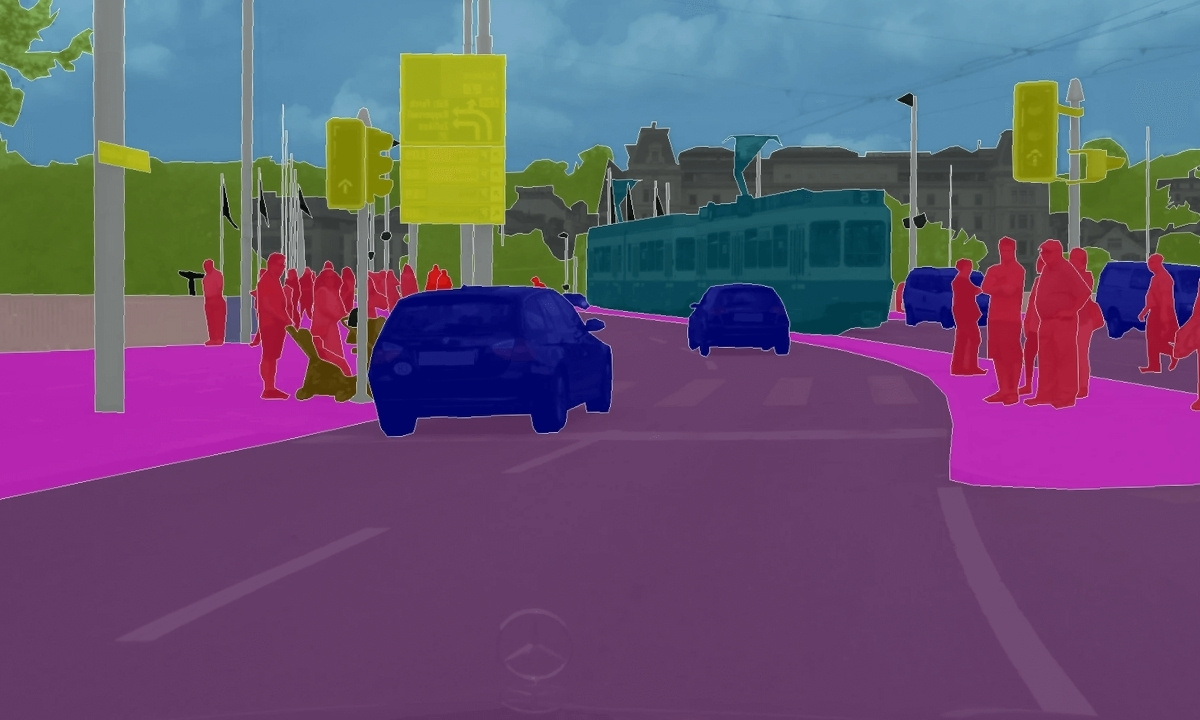
Image segmentation is a powerful technique in computer vision that divides an image into meaningful parts, making it easier to analyze. But what exactly is it, and why is it so important? Image segmentation helps in various fields like medical imaging, autonomous driving, and even social media filters. It allows computers to understand and interpret visual data more effectively. By breaking down images into segments, it becomes possible to identify objects, boundaries, and other critical features. This process is essential for tasks like object detection, facial recognition, and scene understanding. Ready to dive into the fascinating world of image segmentation? Let's explore 27 intriguing facts that will shed light on this cutting-edge technology.
What is Image Segmentation?
Image segmentation is a process in computer vision that divides an image into multiple segments or regions. This technique helps in simplifying the representation of an image, making it easier to analyze. Here are some fascinating facts about image segmentation:
-
Image segmentation helps in identifying objects and boundaries within images, making it crucial for object detection tasks.
-
Medical imaging heavily relies on image segmentation to identify and analyze different parts of the human body, such as organs and tissues.
-
Autonomous vehicles use image segmentation to understand their surroundings, helping them navigate safely by recognizing roads, pedestrians, and other vehicles.
-
Satellite imagery benefits from image segmentation by allowing better analysis of geographical features like forests, water bodies, and urban areas.
-
Agriculture uses image segmentation to monitor crop health, detect diseases, and estimate yields by analyzing aerial images of fields.
Types of Image Segmentation
There are several methods to perform image segmentation, each with its unique approach and applications. Let's explore some of the most common types:
-
Thresholding is one of the simplest techniques, where pixels are divided based on their intensity values.
-
Edge-based segmentation focuses on detecting edges within an image to identify object boundaries.
-
Region-based segmentation groups pixels with similar properties, such as color or texture, into regions.
-
Clustering-based segmentation uses algorithms like k-means to group pixels into clusters based on their features.
-
Deep learning-based segmentation leverages neural networks to achieve highly accurate segmentation results, especially in complex images.
Applications of Image Segmentation
Image segmentation has a wide range of applications across various industries. Here are some examples:
-
Facial recognition systems use image segmentation to identify and analyze facial features for security and authentication purposes.
-
Robotics employs image segmentation to help robots understand and interact with their environment more effectively.
-
Augmented reality applications use image segmentation to overlay digital content onto the real world seamlessly.
-
Fashion industry benefits from image segmentation by enabling virtual try-ons and improving online shopping experiences.
-
Wildlife conservation uses image segmentation to monitor animal populations and track their movements through camera traps and drones.
Challenges in Image Segmentation
Despite its numerous applications, image segmentation faces several challenges that researchers and developers strive to overcome:
-
Variability in lighting conditions can affect the accuracy of segmentation, making it difficult to achieve consistent results.
-
Complex backgrounds can make it challenging to distinguish objects from their surroundings.
-
Occlusion occurs when objects are partially hidden, complicating the segmentation process.
-
Scale variations can impact segmentation accuracy, as objects may appear differently depending on their size and distance from the camera.
-
Computational complexity of advanced segmentation algorithms can be resource-intensive, requiring powerful hardware for real-time applications.
Future of Image Segmentation
The field of image segmentation continues to evolve, with ongoing research and advancements promising even more impressive capabilities:
-
AI and machine learning are driving significant improvements in segmentation accuracy and efficiency.
-
Real-time segmentation is becoming more feasible with advancements in hardware and optimization techniques.
-
3D image segmentation is gaining traction, enabling more detailed analysis of volumetric data in fields like medical imaging and virtual reality.
-
Transfer learning allows pre-trained models to be adapted for specific segmentation tasks, reducing the need for extensive training data.
-
Interactive segmentation tools are being developed to allow users to refine segmentation results manually, improving overall accuracy.
-
Unsupervised learning techniques are being explored to reduce the reliance on labeled training data, making segmentation more accessible.
-
Integration with other technologies like natural language processing and sensor fusion is expanding the potential applications of image segmentation even further.
The Final Slice
Image segmentation is a game-changer in tech. It’s the backbone of many applications, from medical imaging to self-driving cars. By breaking down images into segments, computers can understand and analyze visual data more effectively. This process helps in identifying objects, tracking movements, and even diagnosing diseases.
Understanding the basics of image segmentation can open doors to numerous possibilities. Whether you’re a student, a tech enthusiast, or a professional, knowing how this technology works can give you an edge. It’s not just about cutting-edge tech; it’s about making sense of the world through images.
Keep exploring, keep learning. The world of image segmentation is vast and full of potential. Dive in, experiment, and see how this technology can transform your projects and ideas. The future is bright, and image segmentation is lighting the way.
Was this page helpful?
Our commitment to delivering trustworthy and engaging content is at the heart of what we do. Each fact on our site is contributed by real users like you, bringing a wealth of diverse insights and information. To ensure the highest standards of accuracy and reliability, our dedicated editors meticulously review each submission. This process guarantees that the facts we share are not only fascinating but also credible. Trust in our commitment to quality and authenticity as you explore and learn with us.
